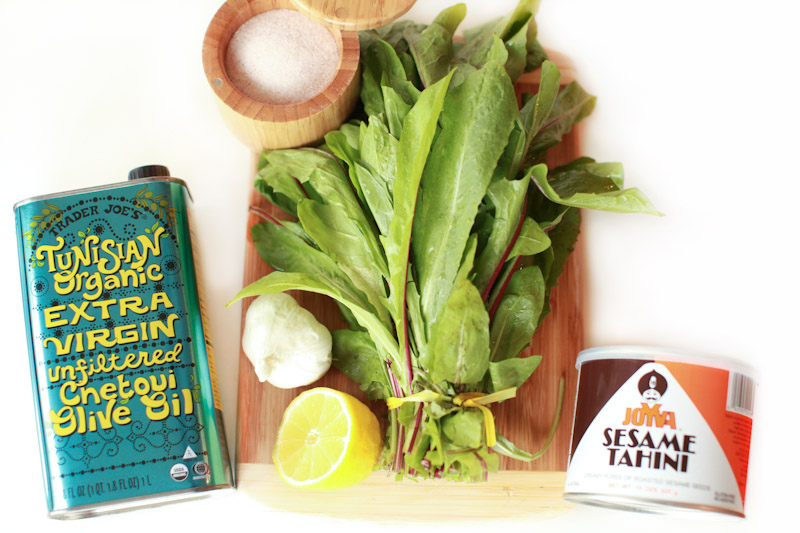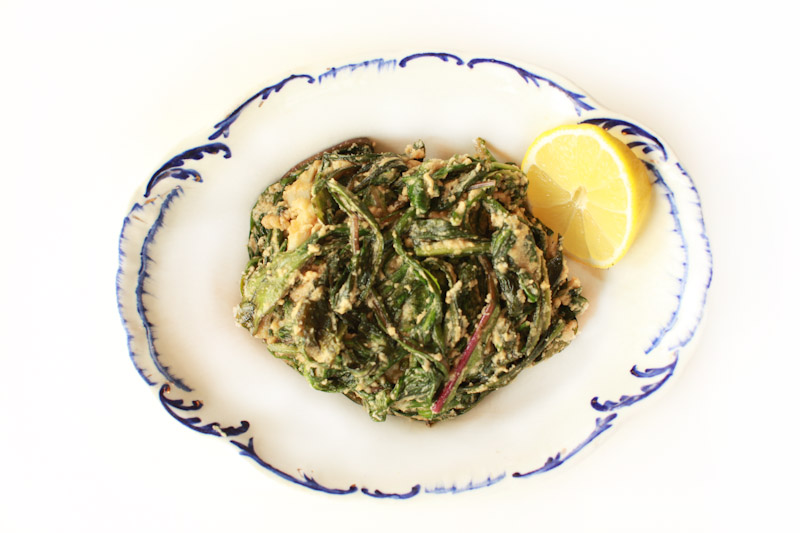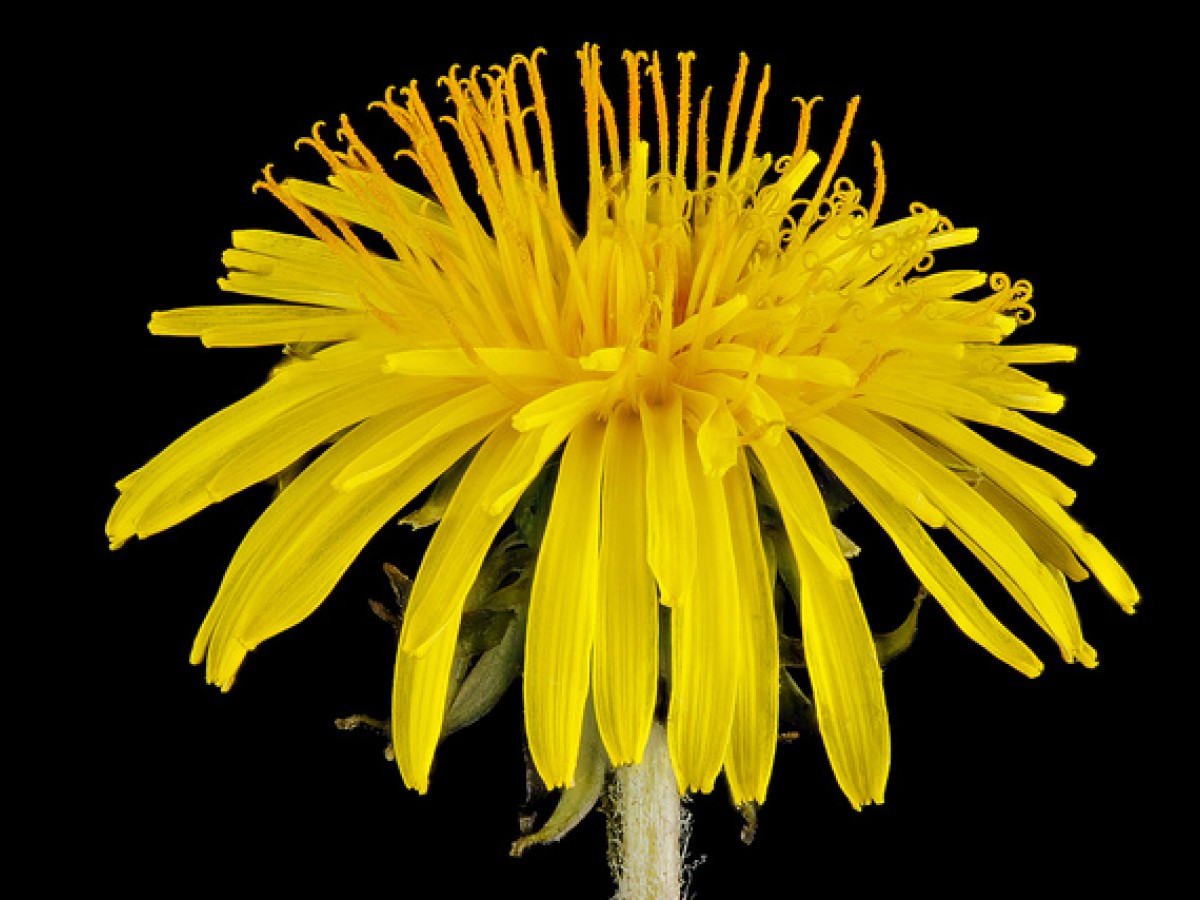Recipe: Tahini Dandelion Greens.
Last summer, my quest for a better beige put me on the trail of tahini. I wanted to get more of this nutty, lignan-rich, sesame paste into my body, but I was largely unfamiliar with its culinary uses outside Greek cuisine. (And honestly even Greek cuisine was sort of, well, Greek to me).
It was Mark Bitman of How to Cook Everything
So why did I choose dandelion greens? Wouldn't baby spinach have been more "sensible", not to mention palatable?
Yes and no. Spinach is great. I throw several fistfuls of it into my smoothie every morning. It contains Betaine (pronounced BEET-uh-een), which protects against heart disease and colon cancer, and may even have a real Popeye effect--it might really make your biceps bigger.
But taste-wise, spinach is just too bland for the boldness of tahini; it gets lost in there (which is why spinach is great for smoothies, where I want it to get lost).
So I felt like I needed something punchier. Something more robust. Something so resilient it could defy Monsanto and push through a dreck-layer of Roundup. Dandelion greens! Yes. The incredible, edible, detoxifying weed. Gimme some of that. (But without the Roundup please.)
Dandelion greens are densely nutritious; they are packed with micronutrients. They also have mild diuretic and laxative effects (I can attest to that). And they appear to help the liver eliminate toxins. All this may decrease the total body burden of metabolic stress and inflammation.
It was pretty easy to get this dish dialed in. And now it's a staple of the Wagner household. Even my kids like it, which blows me away, because dandelion greens can be pretty bitter. But the generous amounts of healthy fat (olive oil and tahini) in this recipe temper the bitterness remarkably well.
Ready to try it?

Ingredients
- 1 bunch dandelion greens, washed and trimmed.
- 4 cloves garlic
- 2 Tbsp roasted tahini (Joyva brand works best).
- 1 Tbsp lemon juice, freshly squeezed.
- Lot's of olive oil
- Sea salt to taste
Instructions
- Crush garlic cloves with the flat of your chef knife. Let them rest for 5-10 min before cooking (allows Allicin to form).
- Completely cover the bottom of a medium skillet with olive oil. (Don't be shy with this fat. It's like an elixir.)
- Add the garlic cloves and sauté on low heat till soft/brown, about 5 min on each side.
- Add 2 tbsp tahini and a pinch of salt. As the tahini melts, stir it into the oil.
- Add dandelion greens and allow them to wilt (about 5 min) stirring occasionally to coat them with tahini.
- Add 1 tablespoon of fresh-squeezed lemon juice and another pinch of salt
- Stir again to completely coat the greens.
- Serve immediately.

Imagine the richness of roasted tahini with a detoxifying flourish of citrus and dandelion and you get some idea of what a satisfying and clarifying dish this is. Full-bodied. Punchy. Delicious. It pairs especially well with any bland protein you want to dress up, like fish, chicken, or tofu.
Bon Appetit!
Some notes on bitterness:
If at first you find this recipe too bitter, then go ahead and add a teaspoon of real maple syrup. The glycemic load of this dish is naturally very low, so if you need a little sweetener, it's not the end of the world. Ultimately though, you may find your palate accommodating to (and even craving) more bitter flavors as time goes by. That's a good thing, because it will expand your appreciation of many other green foods.
Also, a good brand of tahini can make all the difference in the bitterness factor. You'll want your tahini to be roasted (not raw). You'll also want it to hang together when heated so it coats the leaves evenly. I've had best results with Joyva Sesame Tahini. Other brands I've tried either tasted terrible or separated into pure oil and clumpy paste during cooking.
Finally, dandelion greens vary widely in their bitterness, depending on time of year, amount of sunlight, and the age of the plant (young leaves are less bitter). So unless you've got a thing for foraging and experimentation, I suggest you get your greens from a specialty market like Whole Foods, where they are likely to be vetted for flavor.
Yours in Health and Resilience,
Marc Wagner, MD
Cover photo: Dandelion Side by Sam Droege on Flickr.
